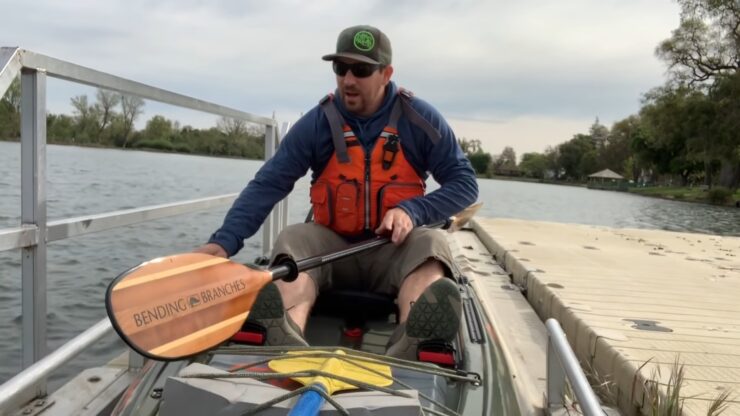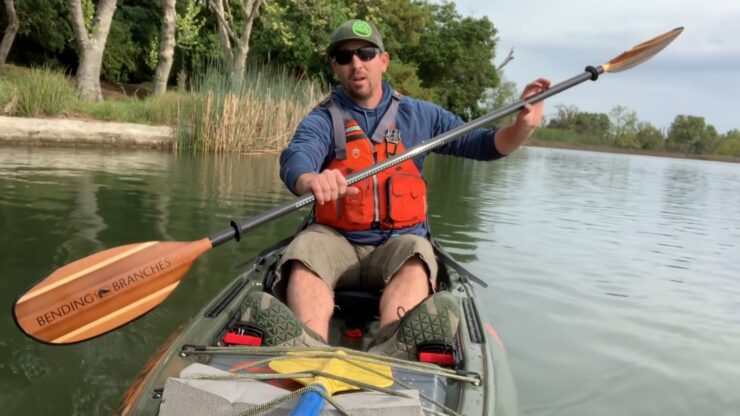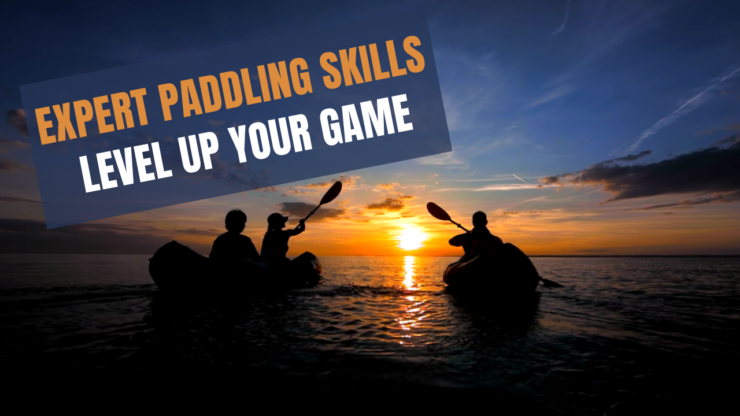If paddling is something you often do for an activity that you spend a lot of time on, it would be best to get as good at it as possible. Propelling a vessel through water seems easy enough and using a paddle to do it is straightforward, right? Well, that may very well be the case but that hardly means that there is no way to learn more tricks and level up your game.
When it comes to paddling, is a skill that has many different nuances to it. This would actually be better explained if we shifted a bit and spoke about the different things a paddle can be used for. Many items have only a single use but a kayak or a canoe paddle is not one.
If you frequently use your kayak for fishing, for example, there are many extra skills you need to know apart from properly using it to move forward. In the following sections, we talk about some of the most useful expert paddling skills so that you can level up your kayak fishing game.
Table of Contents
Toggle1. Easy Kayak Entry

Before you can set off to the middle of the lake or down the river to fish from your kayak, you need to get in properly and safely. Kayaks, and any other small vessels really, can be tough to get in because it is easy to fall over or for the vessel to drift away as you are entering.
To prevent this you need to know how to enter correctly and your paddle can help you. Maintaining three points of contact at all times is how you keep balance and control your center of gravity. Using the paddle for extra balance as a sort of crutch while keeping your shoulders over the center of the kayak is how you will never experience any issues.
When you feel stable on the kayak, place your hands on the gunnels and your bottom down first into the seat. You can also sit down sideways and then swing your feet one at a time. Finally, use your paddle to separate yourself from the shore for a quick boost before paddling. Easy peasy!
2. Paddling and Fishing Simultenouslyy
Doing two things at once is not always possible especially when they are vastly different. Our brain often has trouble maintaining focus and motor functions to two very distinct actions. Just try tapping the top of your head with one hand and making circular motions on your stomach with the other.
Fishing from a kayak and paddling at the same time seems impossible. You need two arms for each of these, meaning you need four in total to paddle and fish at once. Well, this is where one-arm paddling comes into play. Learning how to paddle with one arm will free up the other for fishing.
The key here is to use your body as the second fulcrum point. Hold the paddle with the shaft crossing your body using your gut or chest as the fulcrum point. This is how you make a forward stroke on the side where you hold the paddle. To do it on the opposite side, use your forearm as the fulcrum.
It takes practice and it is a mouthful to explain, but it works wonders since you will be able to fish at the same time while paddling. This is not always needed as you will be in place a lot of the time, but it is neat to know nonetheless.
3. Correct Paddle Placement

Your paddle is your only means of moving through the water. If you misplace it or lose it, you will be in trouble. Therefore, you have to place it the right way when not using it. The best way to do this is to have a dedicated paddle holder on the kayak, somewhere where it will be out of the way and attached.
When you are using it sparingly, enough for it not to be constantly attached to the holder, you can keep the paddle between the thighs and your belly. Keeping it between the legs or under the legs also works as you can grab it from there rather quickly. The most optimal position is when one blade is close to the bow and the other around your hips.
4. The Spin Sweep
Moving the paddle in the common motion to go forward and backward is not enough to maneuver in the water and dictate the tempo of your kayak. You must also incorporate the spin into your repertoire of moves so that you can spin the kayak.
This can be done in two ways. Firstly, sit up straight and twist so that you face the side of your kayak. The paddle needs to be parallel to the kayak. Then, place the paddle in the water behind your hip. Finally, untwist your waist and move the blade all the way to the feet. This is the reverse sweep.
The second way to do this, start off the same way by twisting your body to face the water to the side. However, instead of placing the paddle behind the hips, do it at your feet. When untwisting, go towards the hips. This is the forward sweep.
You will know and feel that you are doing this correctly when you are using your stomach, core, back, and lateral muscles. Powering this stroke takes a few practice runs. Do not lean or torque the wrists as you can fall overboard due to the kayak being too unstable.
5. Bow Rudder Prowess
Last but not least, you should learn how to course adjust in a way that is not only optimal but one that makes you look cool. The bow rudder stroke is what you call this move. Put your paddle in the natural position, like you want to make a forward stroke, but parallel to the kayak. Then, rolling back your lower wrist, you open the blade angle and the boat turns towards the paddle.
It is important to look in the direction where you want your kayak to end up. The upper arm must be kept bent at 90 degrees as it keeps the water that goes against the blade. The bow rudder stroke is perfect for slight adjustments when going forward, as well as in windy and rough conditions.
Meet Maria Alexander, the fearless adventurer steering the ship at KayakPaddling.net. Her mission? To convince you that life’s too short for dry land and that the best stories always start with “So there I was in my kayak…”
Related Posts:
- 16 Best Kayak For Beginners 2024 - Kayaking Adventure Gear
- Heavy Duty Fishing: 11 Best Rods And Reels For Big Fish 2024
- 12 Best Beach Wagons & Carts 2024 - For All-Terrain
- 10 Best Fish Finders Under $200 2024 - Top Affordable Picks
- 10 Best Kayaks For Camping 2024 - Lightweight and…
- How to Stay Safe on Slow Moving Waters When Paddle Boarding?












